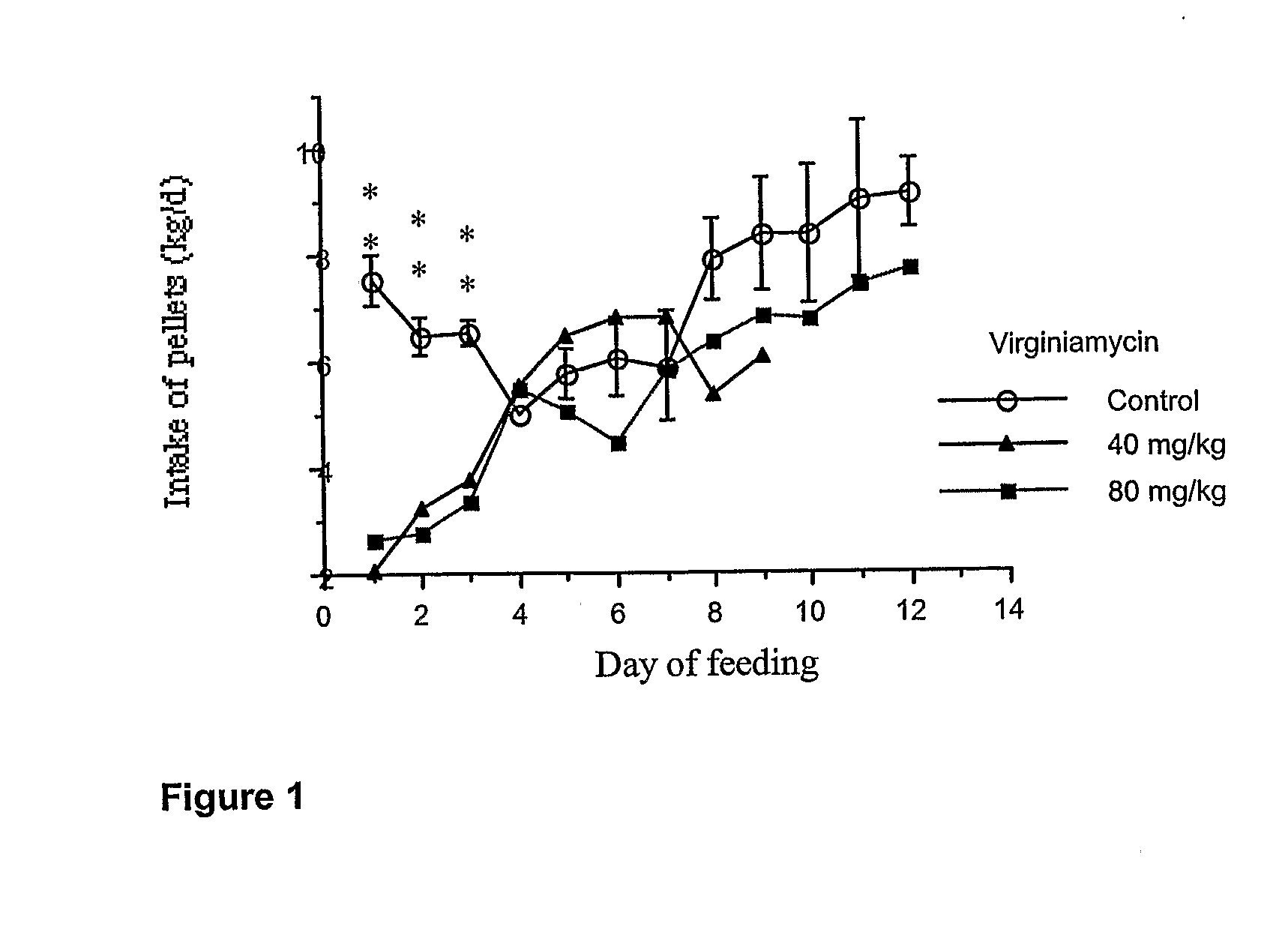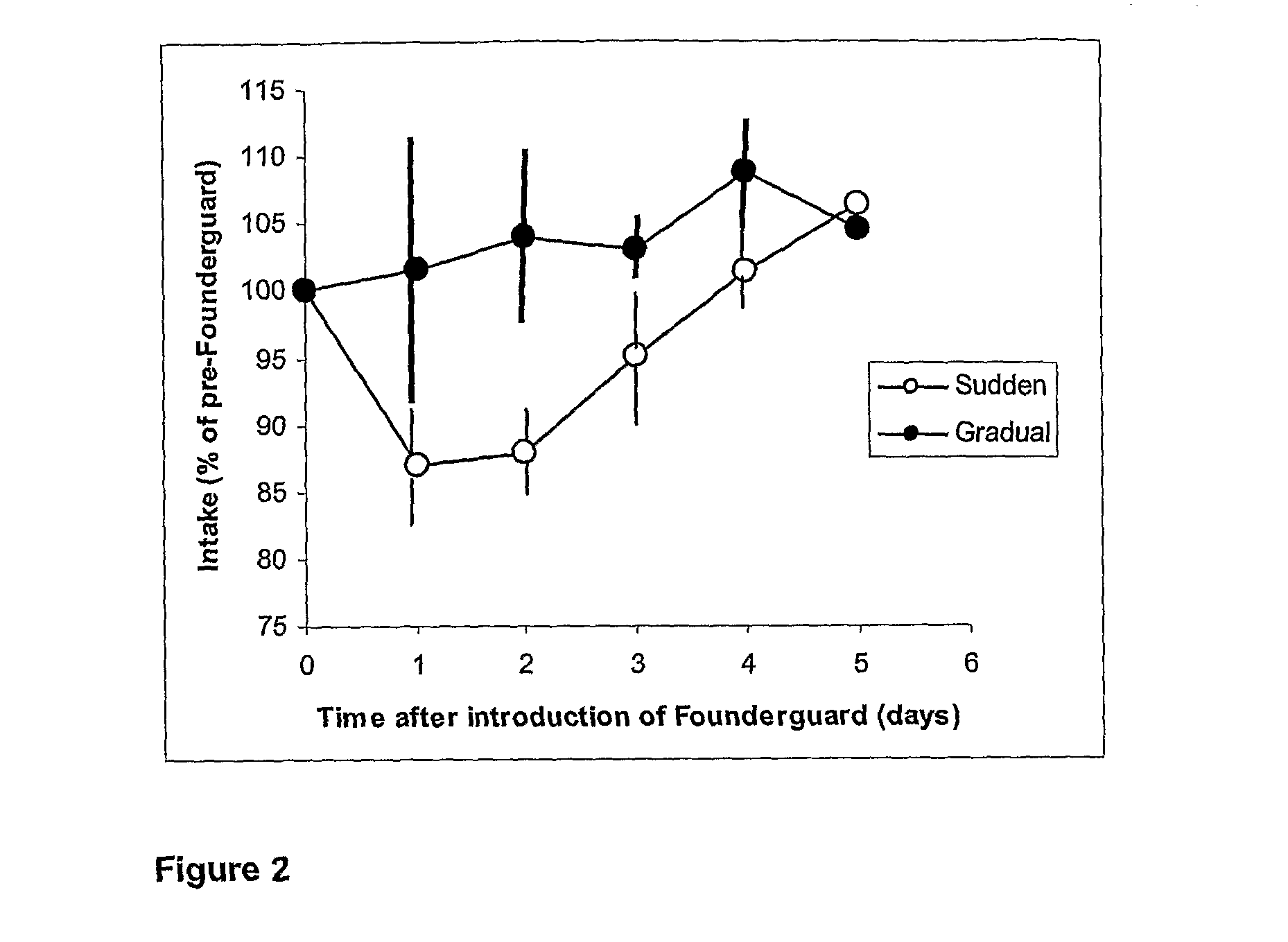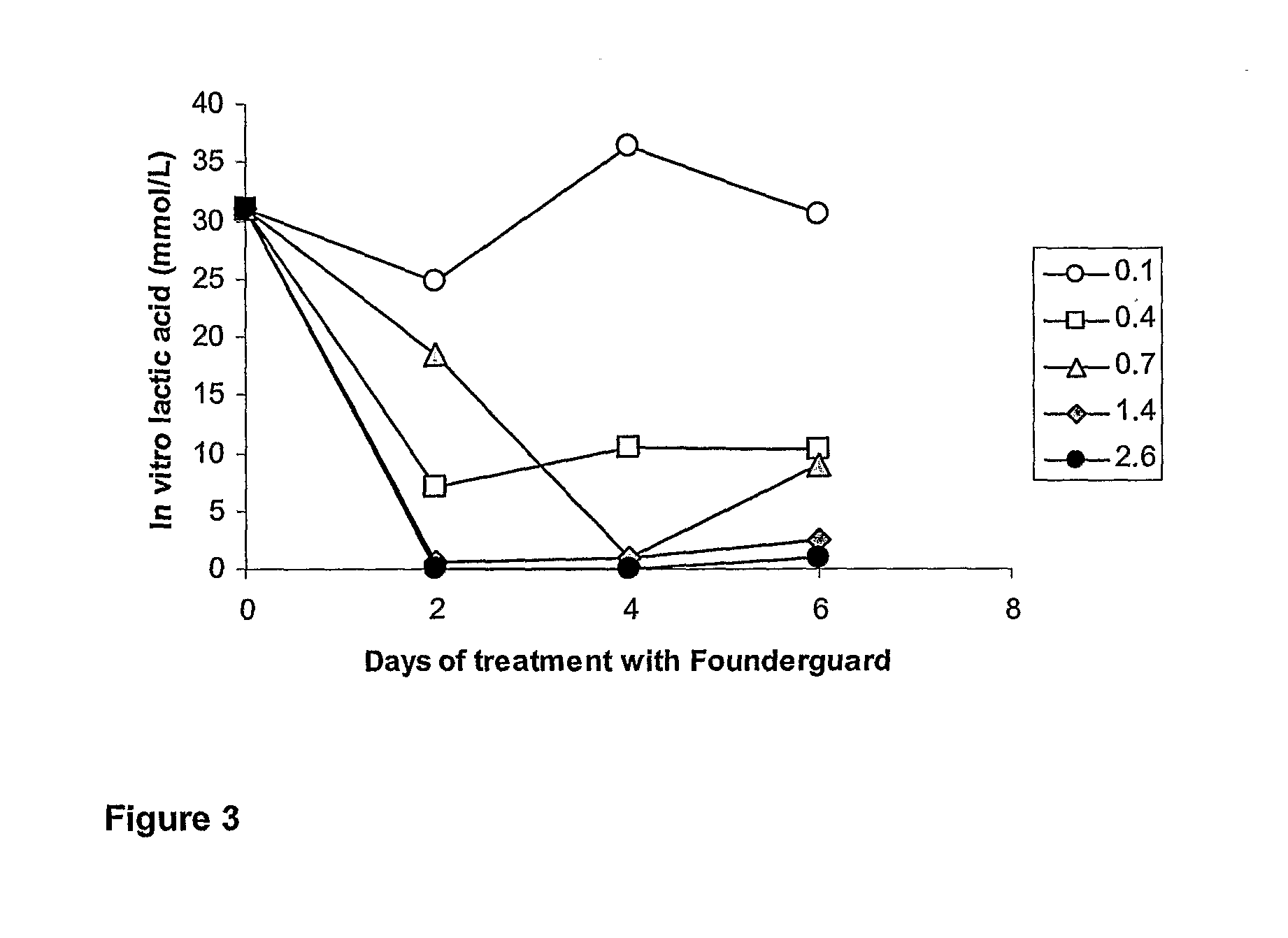Method of preventing reduced feed intake in animals and treatment of disease conditions
a technology of reduced feed intake and animal feed, which is applied in the direction of biocide, plant growth regulator, cyclic peptide ingredients, etc., can solve the problems of less efficient feed conversion in production animals, reduced feed intake or appetite loss, so as to prevent a reduction in feed intake and reduce the effect of feed intak
- Summary
- Abstract
- Description
- Claims
- Application Information
AI Technical Summary
Benefits of technology
Problems solved by technology
Method used
Image
Examples
example 1
Dose rate study A
[0135]The Applicant has conducted an experiment in horses showing that gradual introduction of virginiamycin over 4 days as shown below does not cause a depression in feed intake.
[0136]Day 1 25% of complete dose
[0137]Day 2 50% of complete dose
[0138]Day 3 75% of complete dose
[0139]Day 4 100% of complete dose
[0140]The results of the experiment are summarized in FIG. 2 and show that with ‘sudden’ introduction of the full dose of virginiamycin (0.5 mg / kg bodyweight per day) there was a significant decrease in feed intake compared to pretreatment levels (day 0) and compared to a ‘gradual’ introduction as described above. This represents a major discovery with implication for horses and for production animals.
[0141]In order to achieve effective concentrations of virginiamycin to control lactic acid producing bacteria and Clostridium spp. throughout the digestive tract, through to the terminal colon under conditions where the risk is assessed as being high, it may be neces...
example 2
Dose Rate Study B
[0142]For sheep and beef cattle being fed in confinement the concentration of virginiamycin in the total mixed ration should be 5 g virginiamycin / tonne on day 1 of feeding, 10 g / tonne on day 2, 15 g / tonne on day 3 and 20 g / tonne from day 4 onwards. The amount of grain in the diet should be gradually increased as part of the introductory feeding period and should not exceed 40% of the total diet before day 5 from the start of virginiamycin and grain feeding.
example 3
Dose Rate Effectiveness Study
[0143]Twelve horses were housed individually and fed 2.5 kg / d of a commercial horse concentrate each morning. Approximately 6 kg of medium quality lucerne hay was fed after animals had consumed the concentrate.
TABLE 1Summary of design, animals and dose rates used to definethe effective dose of virginiamycin to control the accumulationof lactic acid during fermentation of soluble carbohydrateby equine hindgut (faecal) digesta.Virginia-Dose rateDose ratemycinHorseVirginia-Virginiamycin(mg / kgweightmycinmg / kgHORSEPeriodpellets)(kg)(mg / d)live weight1151248512802.63921644461600.359312564346401.475418474200.04252644661600.3436216440400.091721284563200.7028232444800.1809332520800.154103643701600.4321131284623200.6931232564506401.422
[0144]The experiment was run in three periods with 4 animals in the stables during each period. Each period lasted 12 days: five days to allow adaptation to the stables and the dietary regime, and then 7 days when medicated pellets co...
PUM
| Property | Measurement | Unit |
|---|---|---|
| time | aaaaa | aaaaa |
| time | aaaaa | aaaaa |
| time | aaaaa | aaaaa |
Abstract
Description
Claims
Application Information
 Login to View More
Login to View More - R&D
- Intellectual Property
- Life Sciences
- Materials
- Tech Scout
- Unparalleled Data Quality
- Higher Quality Content
- 60% Fewer Hallucinations
Browse by: Latest US Patents, China's latest patents, Technical Efficacy Thesaurus, Application Domain, Technology Topic, Popular Technical Reports.
© 2025 PatSnap. All rights reserved.Legal|Privacy policy|Modern Slavery Act Transparency Statement|Sitemap|About US| Contact US: help@patsnap.com



